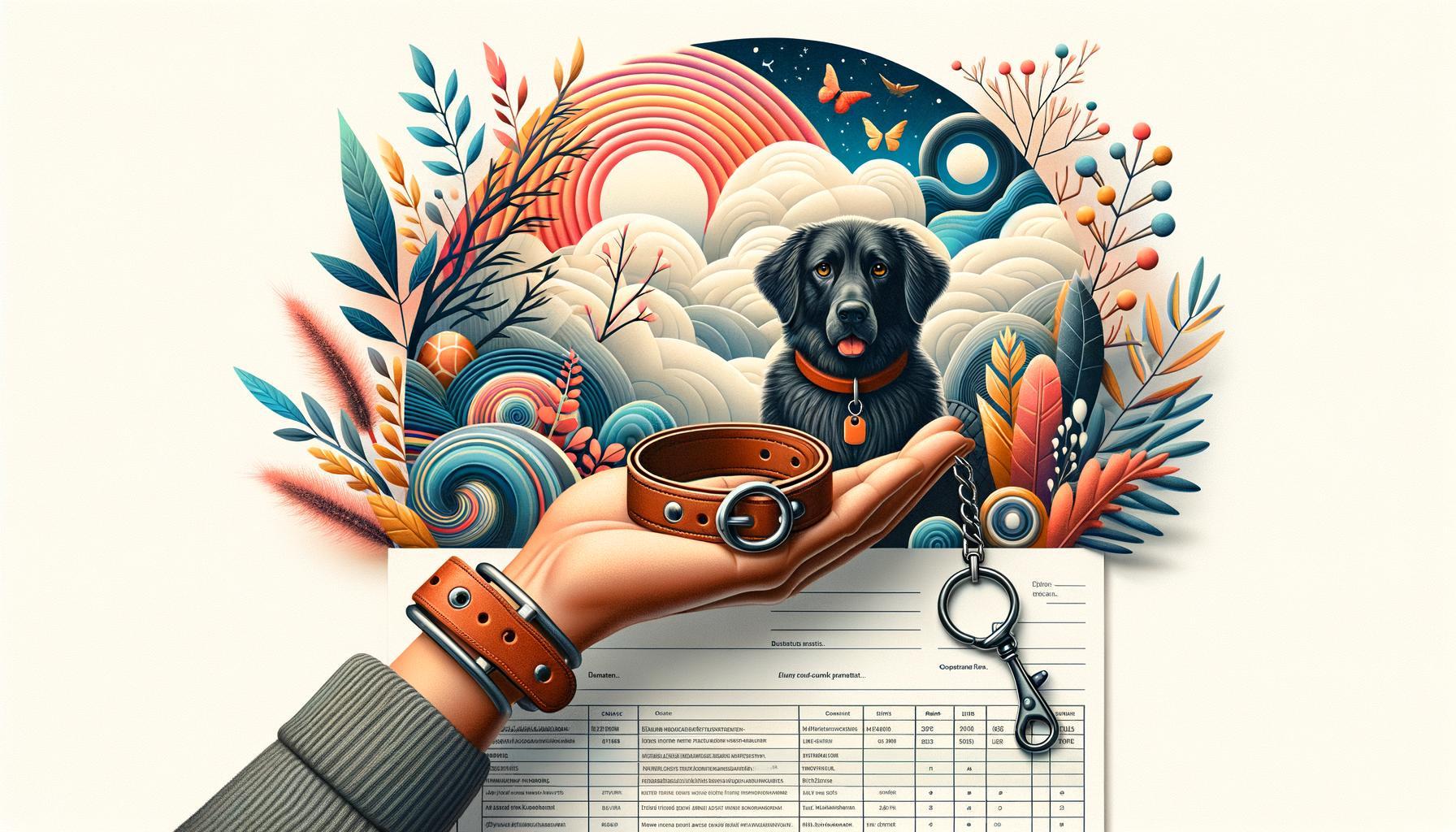In a world teeming with fast-paced routines and countless stressors, emotional oases can be hard to come by. Yet, for many, solace is found in a relationship that transcends typical human connections. Enter a realm where wagging tails, purring bundles of fur, and even chirping companions offer more than just passing comfort—they become lifelines. “From Fur to Feathers: Exploring Emotional Support Animals” delves into the fascinating and heartwarming phenomenon of animals transformed into emotional anchors. This journey unravels the myriad ways in which our non-human friends, from the familiar pets to the less conventional ones, navigate their roles as vital therapeutic allies, providing a sense of balance, companionship, and unconditional love. Join us as we embark on this exploration, where each story reveals the profound, yet often understated, impacts these animals have on human well-being.
Table of Contents
- Understanding the Bonds: How Emotional Support Animals Soothe the Soul
- Types of Emotional Support Animals: Beyond the Traditional Dog
- Navigating the Legal Landscape: Your Rights with Emotional Support Animals
- Choosing the Right Companion: Factors to Consider When Selecting an ESA
- Training and Socialization: Key Steps to a Well-Adjusted Emotional Support Animal
- To Conclude
Understanding the Bonds: How Emotional Support Animals Soothe the Soul
Imagine returning home after a stressful day, greeted by the gentle purring of a cat or the enthusiastic wagging of a dog’s tail. These seemingly small interactions have profound effects on mental well-being. Emotional support animals (ESAs) offer a unique kind of comfort that goes beyond the companionship of a typical pet. They provide a sense of safety and unconditional love, helping to reduce feelings of anxiety and depression. The bond between an ESA and its owner is often characterized by:
- **Non-judgmental support**
- **Consistent companionship**
- **Physical affection**
The healing power of ESAs transcends species. Some people find solace in the feathery presence of birds, whose chirps and ability to mimic human speech can be incredibly engaging, while others prefer the structured calm that reptiles like turtles or snakes can bring. Regardless of the type, ESAs help regulate and improve emotional health by creating a symbiotic relationship where both animal and human thrive. Studies have shown diverse benefits across different types of ESAs:
| Type of ESA | Benefit |
|---|---|
| Dogs | Lowers stress and anxiety levels |
| Cats | Reduces feelings of loneliness |
| Birds | Boosts mood with interactive behavior |
| Reptiles | Provides a calming influence |
Types of Emotional Support Animals: Beyond the Traditional Dog
While dogs are commonly recognized for their abilities to provide unwavering companionship and emotional support, the realm of emotional support animals (ESAs) extends to a diverse array of species. Many individuals have found comfort and solace with various other types of ESAs, each bringing its own unique set of benefits. For example, **cats** are celebrated for their calming behaviors and affectionate purring, which can work wonders for alleviating stress and anxiety. **Rabbits** and **guinea pigs** are also considered excellent ESAs due to their gentle natures and low-maintenance care requirements.
- Birds: Parrots and canaries can uplift emotional well-being with their songs and vibrant colors.
- Miniature Horses: Known for their intuitive and sensitive personalities, they can offer profound emotional connections.
- Reptiles: Animals like turtles and lizards can provide a sense of calm and predictability due to their slow, deliberate movements.
- Fish: The serene presence and rhythmic movements of fish in a well-kept aquarium can have a tranquilizing effect on the mind.
| Type of ESA | Key Benefit | Ideal For |
|---|---|---|
| Cat | Reduces anxiety through soothing presence | Individuals looking for minimal care responsibility |
| Bird | Brightens mood with songs and colors | People who enjoy auditory stimulation |
Navigating the Legal Landscape: Your Rights with Emotional Support Animals
When it comes to emotional support animals (ESAs), understanding your **legal rights** can be a maze. The *Fair Housing Act (FHA)* grants you the right to live with your ESA, even in ”no pets” housing. This law ensures that landlords must make ”reasonable accommodations” for you and your furry – or feathered – companion. However, this does not give you carte blanche; if your ESA poses a threat to others or causes significant property damage, your landlord may have grounds to object.
- Reasonable Accommodation: Landlords cannot charge extra fees or deposits for ESAs.
- Documentation: You may need a letter from a licensed mental health professional confirming the necessity of your ESA.
- No Discrimination: Landlords can’t discriminate against you because you have an ESA.
| Law | Scope |
|---|---|
| Fair Housing Act | Housing Accommodation |
| Air Carrier Access Act | Travel in Aircraft |
| Americans with Disabilities Act | Public Spaces (Limited) |
Travel is another arena where your ESA rights come into play. Under the *Air Carrier Access Act (ACAA)*, airlines must permit ESAs to fly with you in the cabin without extra charges, but there are guidelines to ensure safety and comfort for all passengers. **Airlines may require documentation** submitted in advance, and there may be restrictions on the type of animal you can bring. While popular ESAs like dogs and cats are typically acceptable, some restrictions apply to exotic animals. Always check the specific airline’s policy before you travel.
Choosing the Right Companion: Factors to Consider When Selecting an ESA
When embarking on the journey to find your ideal emotional support animal (ESA), it’s crucial to consider a variety of factors to ensure a harmonious match. The nature of your lifestyle is a pivotal aspect. **Are you a social butterfly constantly on the move or a homebody preferring tranquil moments?** Each animal has different needs for socialization, exercise, and space. For instance, a lively dog may thrive in active environments, while a serene cat could be content with indoor serenity. Moreover, your living situation matters significantly. **Do you reside in a spacious home or a compact apartment?** Certain animals, such as large dogs, might require more room to roam, whereas smaller pets like birds or rabbits can be perfectly happy in limited spaces.
Another essential factor is **allergy considerations**. Understanding any potential allergic reactions to specific types of animals can save you from future health concerns. Financial aspects also come into play. **Can you afford the ongoing costs associated with your desired pet?** This includes essentials like food, grooming, and veterinary care. Additionally, the temperament of the animal should align with your emotional needs. While some people may find solace in the affection of a cuddly cat, others might benefit from the playful interactions with a dog. To summarize, here’s a quick comparison:
| Factor | Considerations |
|---|---|
| Lifestyle | Active vs. Sedentary |
| Living Space | House vs. Apartment |
| Allergies | Animal Fur vs. Feather |
| Financial | Budget for Care |
| Temperament | Playful vs. Calm |
Training and Socialization: Key Steps to a Well-Adjusted Emotional Support Animal
Training and socialization are essential components for raising a well-adjusted emotional support animal (ESA). Early exposure to diverse environments and consistent teaching fosters adaptability and strengthens the bond between the animal and its owner. For instance, dogs might benefit from **obedience training** classes, while birds might enjoy interactive toys that stimulate their minds. Not only does this enhance the animal’s ability to provide emotional support, but it also ensures that they are comfortable and confident in various settings. Consider implementing **positive reinforcement** techniques, which are proven to be both effective and nurturing.
Socialization can take many forms and should be tailored to the specific needs of your ESA. Here are a few ideas to consider:
- Grooming sessions: Regular grooming helps animals get used to being handled and cared for.
- Meet-and-greets: Introduce your ESA to friends and other pets to foster comfortable interactions.
- Daily walks: Especially for dogs, walks expose them to new scents, sounds, and social situations.
- Play dates: Organize safe play dates with other animals to encourage social behavior.
| Animal | Socialization Need | Training Focus |
|---|---|---|
| Dog | Exposure to different environments | Obedience, social skills |
| Bird | Interactive play and handling | Stimulation, bonding |
To Conclude
As we draw the curtains on our exploration of emotional support animals, it’s evident that these remarkable creatures—whether cloaked in fur, adorned with feathers, or dressed in scales—bring hues of comfort to the mosaic of our lives. From the gentle purr of a cat to the melodious chirping of a bird, these companions bridge the gap between solitude and solace, lending an empathetic ear where words often fail.
Each story shared, each anecdote unveiled, paints a testament to the unseen bond we forge with our non-human allies. They are, in many ways, the silent sentinels of our emotional landscapes, providing a sanctuary of understanding in an often chaotic world.
As we tread the path forward, let’s cherish these partnerships, respecting the unique ways they enrich our existence. In recognizing the significance of emotional support animals, we acknowledge the depth of connection that transcends language and species—a reminder that sometimes, the remedy we seek doesn’t come in a dialogue, but in the unwavering presence of a loyal friend.
So, whether it’s fur or feathers, fins or scales, let’s celebrate the silent guardians of our hearts, and embrace the serenity they bring to our lives. As we part ways with this narrative, may we carry forward a deeper appreciation for these extraordinary companions, who, with gentle eyes and quiet grace, make our world a bit more bearable, one comforting moment at a time.







Leave a Reply